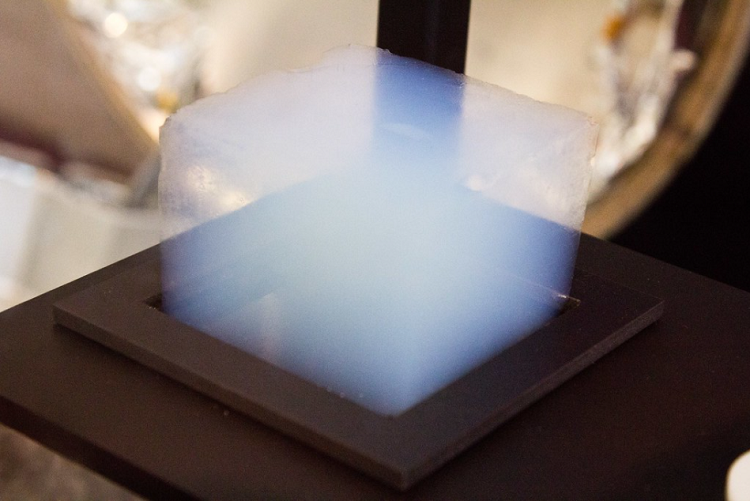

SEARCH
Aerogel, a new thermal insulation material that has attracted much attention in recent years, has attracted much attention due to its ultra-light weight, ultra-low thermal conductivity and excellent thermal insulation properties. So, what is the composition of the aerogel thermal insulation material?

The composition of aerogel mainly includes two parts: matrix and porosity.
Aerogel matrix is the core part of aerogel thermal insulation material, which is composed of nano-sized solid particles and amorphous gel. Common aerogel matrix materials are silica (SiO2) aerogel, alumina (Al2O3) aerogel and so on. These matrix materials are formed by sol-gel process. In this process, the base material undergoes hydrolysis and polycondensation to form nanoscale primary particles, which then aggregate to form a gel with a three-dimensional network structure. Pores are the pores in the matrix, and their pore size is usually between 20-50nm, which is the most significant structural feature in aerogel.
The porosity of aerogel is very high, which can reach more than 90%, which is one of the important reasons for the ultra-low thermal conductivity of aerogel. Since the size of the pores is much smaller than the average free path of air molecules, air cannot conduct effective heat conduction in the pores, so the heat transfer in aerogel mainly depends on convection and radiation. In addition, the matrix network structure in the aerogel can effectively limit the diffusion of gas molecules in the solid, further reducing heat conduction.
In addition to the matrix and pores, the aerogel matrix is usually supplemented with some auxiliary materials to improve its physical properties and processing properties. These additives may include reinforcers, adhesives and surface treatments. The role of the enhancer is to increase the strength and durability of the aerogel, making it more robust and durable. The adhesive can enhance the adhesion between aerogel particles and improve the overall stability of the material. The surface treatment agent can improve the surface properties of the aerogel, making it easier to coat, apply, or adsorb on other substrates.
Through the above composition, the aerogel thermal insulation material has many unique characteristics.
First, due to the porous structure of the aerogel matrix, the material has ultra-low density and high porosity, thus achieving low heat conduction and sound wave propagation speed. This makes the aerogel thermal insulation material with excellent thermal and thermal insulation properties, which can effectively prevent the transfer of heat and noise.
Secondly, the aerogel matrix has excellent thermal insulation properties, which can effectively reduce the loss of heat energy and provide good insulation effect. In addition, aerogel insulation materials also have good chemical corrosion resistance and thermal stability, suitable for a variety of harsh environment and high temperature conditions.
As a new kind of thermal insulation material, aerogel has excellent performance and wide application prospect. With the further study of its preparation technology and properties, it is believed that aerogel will play an increasingly important role in the field of materials science in the future.
Related